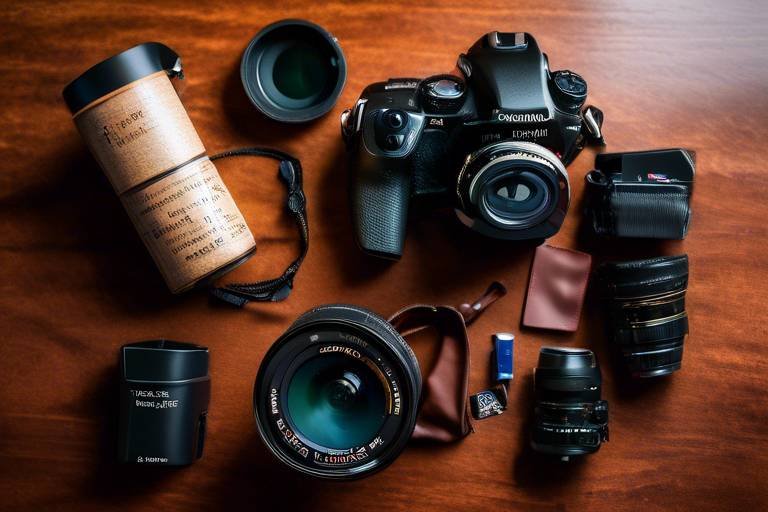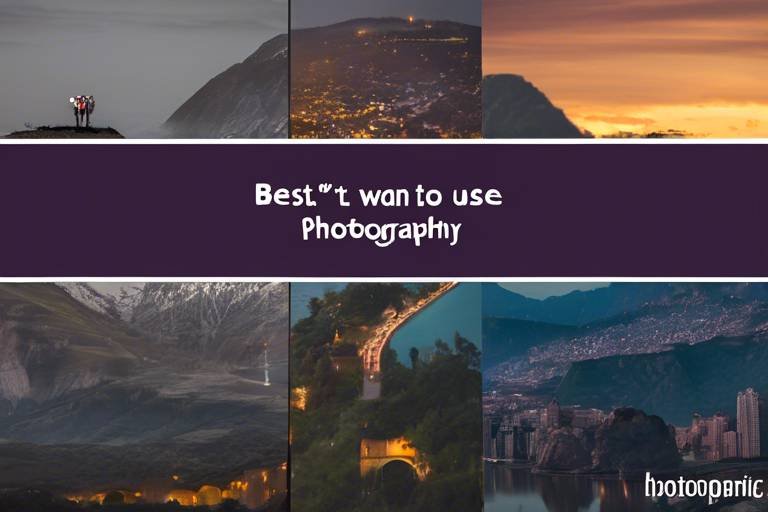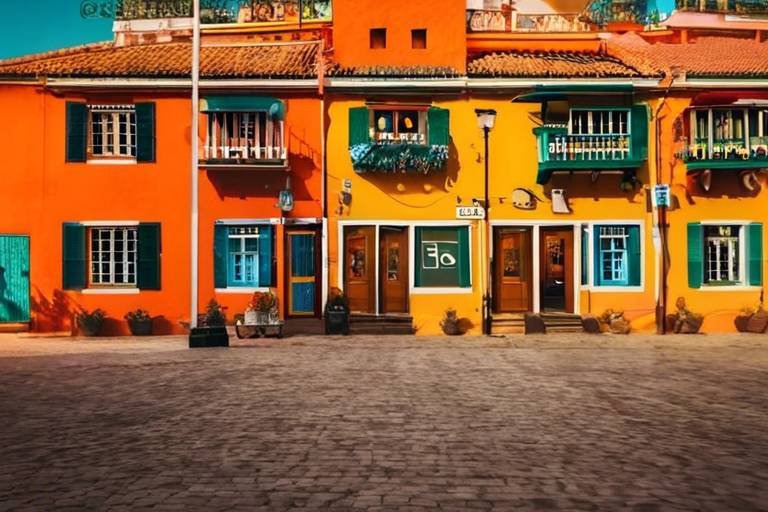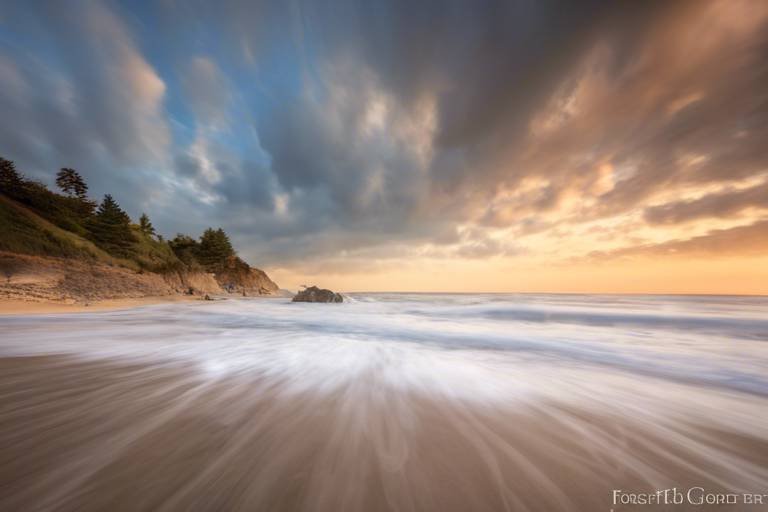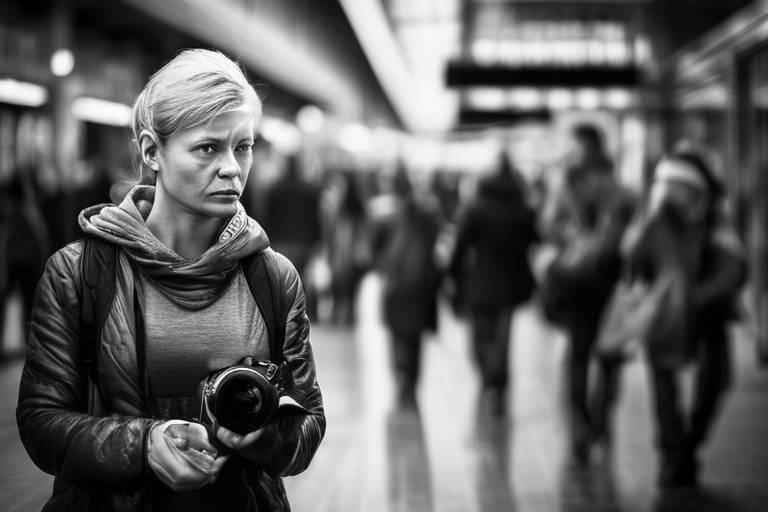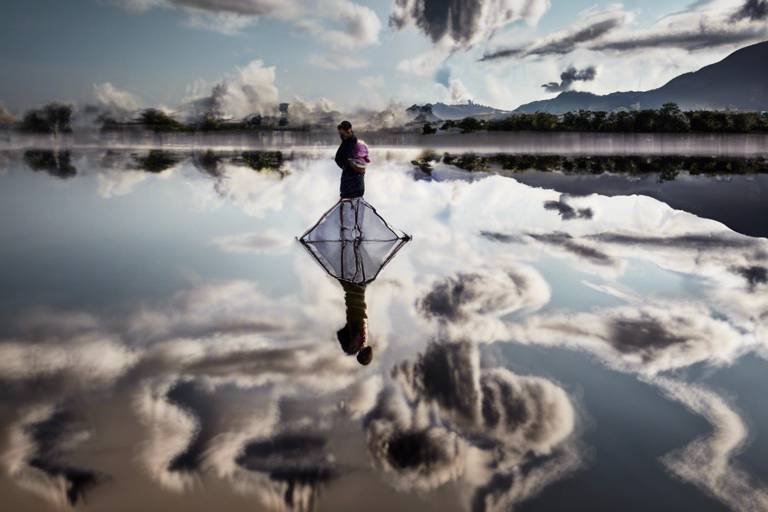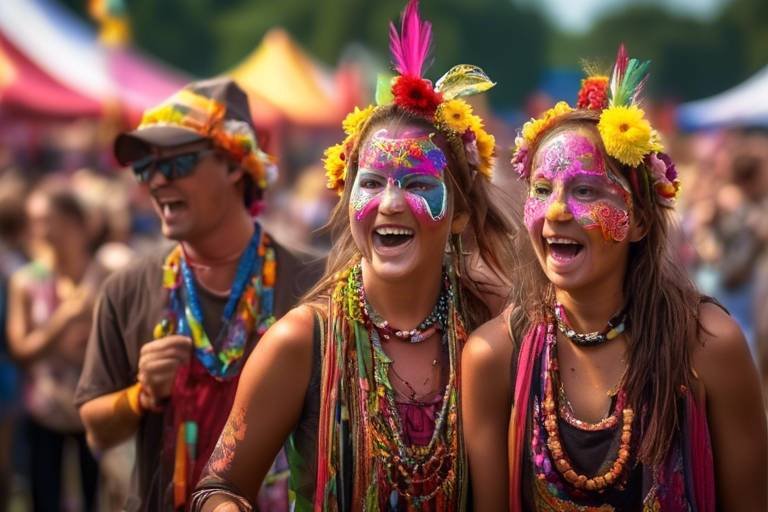Tips for Taking Great Travel Photos in Challenging Weather Conditions
Travel photography can be incredibly rewarding, but it often comes with its own set of challenges, especially when it comes to dealing with unpredictable weather conditions. However, with the right skills and techniques, you can still capture stunning travel photos even in the most adverse weather situations.
Understanding how different weather conditions can impact your photos is crucial. Rain, snow, fog, or harsh sunlight can all affect the lighting and colors in your images. By learning how to adapt your photography style to these conditions, you can elevate the quality of your travel photos.
Choosing the right gear is essential when shooting in challenging weather. Investing in weather-sealed cameras and lenses, as well as protective accessories like rain covers and lens hoods, can make a significant difference in the outcome of your photos.
Instead of trying to avoid inclement weather, consider embracing it as a unique opportunity to capture dramatic and atmospheric shots. Incorporating elements like raindrops on a window or fog rolling over a landscape can add depth and interest to your travel photos.
Mastering the play of light and shadows is key to creating compelling travel photos in challenging weather conditions. Experiment with backlighting, silhouettes, and reflections to add mood and dimension to your images, even when the weather is less than ideal.
Don't be afraid to embrace imperfections caused by the weather, such as lens flares or water droplets on your lens. These elements can add a sense of authenticity and character to your photos, making them more engaging and memorable.
Protecting your camera equipment from the elements is crucial when shooting in challenging weather. Be sure to use lens cloths, waterproof bags, and proper storage solutions to prevent damage and ensure that your gear stays in top condition.
Experimenting with different camera settings is essential for capturing the desired effects in varying weather conditions. Adjusting parameters like exposure compensation, white balance, and shutter speed can help you achieve the perfect shot, even when faced with challenging lighting situations.
Post-processing tools and techniques can further enhance your travel photos taken in difficult weather conditions. From adjusting exposure and color balance to removing distractions, editing software can help you transform your raw images into stunning final results.
By incorporating these tips and techniques into your travel photography workflow, you can overcome the challenges posed by adverse weather conditions and create truly remarkable images that capture the essence of your journey.
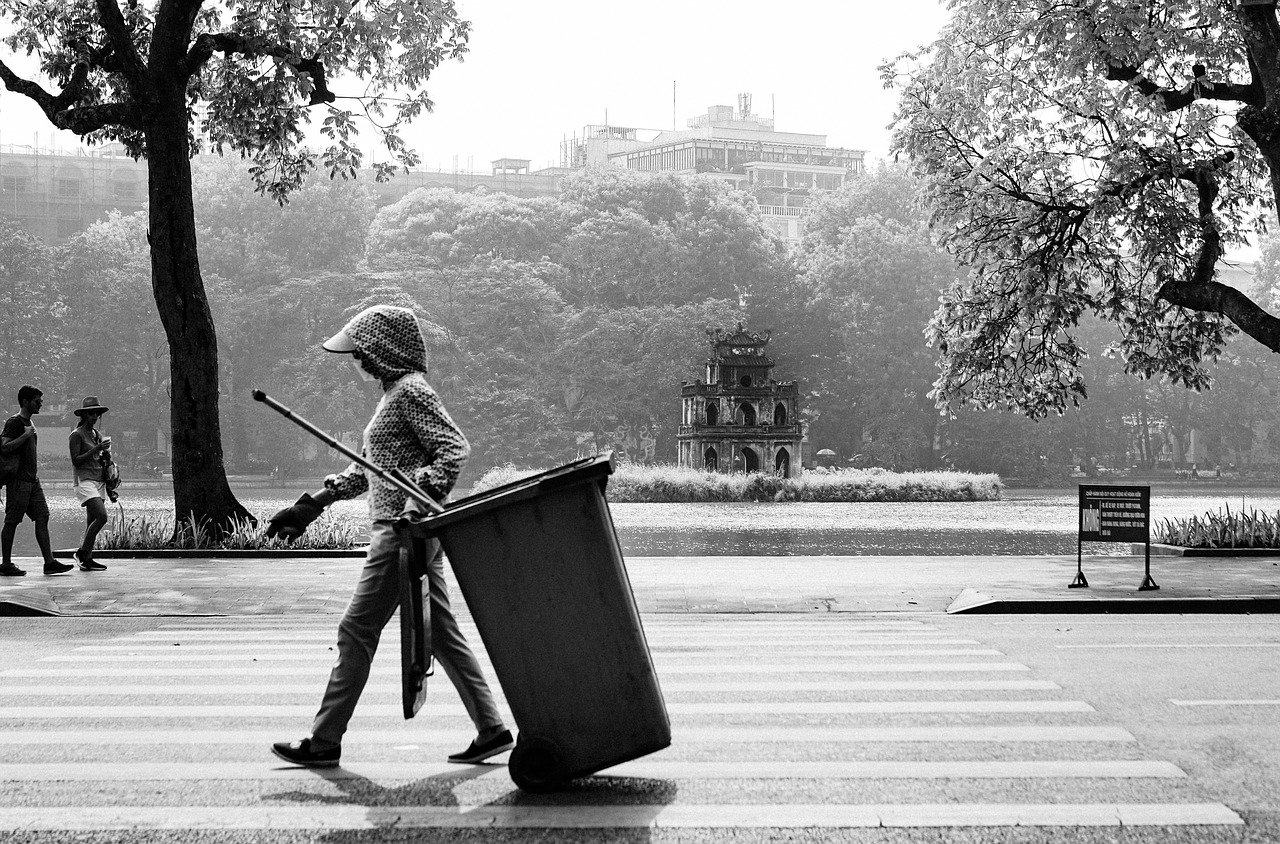
Understanding the Weather
Learn how to capture stunning travel photos even in difficult weather conditions with these expert tips and techniques.
Weather plays a crucial role in photography, influencing lighting, colors, and overall mood. Different weather conditions can drastically impact the outcome of your travel photos. For instance, bright sunlight can create harsh shadows, while overcast skies may provide a soft, diffused light ideal for capturing details. Understanding how weather affects your surroundings can help you adapt your photography style accordingly, resulting in more dynamic and compelling images.
Selecting the appropriate camera equipment and accessories is essential for overcoming challenging weather conditions. Invest in weather-sealed cameras and lenses to protect your gear from rain, snow, or dust. Additionally, consider carrying a sturdy tripod to ensure stability in windy conditions and various filters to enhance your shots in different lighting situations.
Incorporating elements like rain, snow, fog, or wind into your compositions can add a sense of drama and uniqueness to your travel photos. Embrace the weather conditions as opportunities to capture distinctive images that stand out from typical sunny day shots. Experiment with capturing raindrops on surfaces or using fog to create a mysterious atmosphere in your photographs.
Mastering the interplay of light and shadows is essential for creating visually striking travel photos, especially in adverse weather. Embrace the contrast between light and dark to add depth and dimension to your images. Look for interesting patterns created by shadows or use backlighting to create silhouettes that evoke emotion and intrigue.
Don't shy away from weather-related imperfections in your photos. Lens flares, raindrops on the lens, or snowflakes can add a sense of authenticity and charm to your images. Embrace these imperfections as unique elements that contribute to the overall story of your travel experiences, making your photos more relatable and engaging.
Ensuring the safety of your camera gear is paramount when shooting in challenging weather conditions. Use protective gear such as rain covers, lens hoods, and camera bags to shield your equipment from moisture, dust, and extreme temperatures. Proper maintenance and regular cleaning are also essential to prolong the lifespan of your gear and maintain optimal performance.
Explore a variety of camera settings to adapt to different weather situations and achieve desired effects in your travel photos. Adjusting exposure compensation can help balance light and dark areas, while tweaking white balance settings can enhance the colors in your images. Don't be afraid to experiment with settings to discover unique ways to capture the mood and atmosphere of your surroundings.
After capturing photos in challenging weather conditions, utilize post-processing tools and techniques to further enhance your images. Adjusting contrast, saturation, and sharpness can help bring out details and create a more polished look. Experiment with different editing styles to add a creative touch to your travel photos and make them truly stand out.

Choosing the Right Gear
When it comes to capturing great travel photos in challenging weather conditions, choosing the right gear is essential. Your camera equipment can significantly impact the outcome of your shots, so it's crucial to select gear that suits the specific conditions you'll be facing.
First and foremost, consider the weather-sealing of your camera and lenses. Opt for equipment that can withstand moisture, dust, and varying temperatures to ensure durability and performance in challenging environments. Investing in weather-sealed gear can provide you with peace of mind and allow you to focus on your photography without worrying about potential damage.
Additionally, think about the portability and weight of your gear, especially if you'll be traveling long distances or hiking to remote locations. Lightweight and compact cameras and accessories can make a significant difference in your comfort and mobility, enabling you to capture stunning shots without being weighed down by heavy equipment.
When it comes to lenses, versatility is key. Choose lenses with a wide range of focal lengths to adapt to different shooting conditions and compositions. A versatile zoom lens or a combination of prime lenses can offer you the flexibility to capture a variety of subjects and scenes, from sweeping landscapes to detailed close-ups.
Furthermore, don't forget about accessories that can enhance your photography experience in challenging weather. Consider investing in a sturdy tripod to stabilize your shots in windy or rainy conditions, or a lens hood to prevent lens flare when shooting in bright sunlight or snow. Quality filters, such as polarizers or ND filters, can also help you control reflections, enhance colors, or adjust exposure levels effectively.
Ultimately, choosing the right gear for travel photography in challenging weather conditions requires a balance of functionality, durability, and versatility. By selecting weather-sealed, portable, and versatile equipment, you can elevate your photography and capture stunning images regardless of the weather challenges you may encounter.
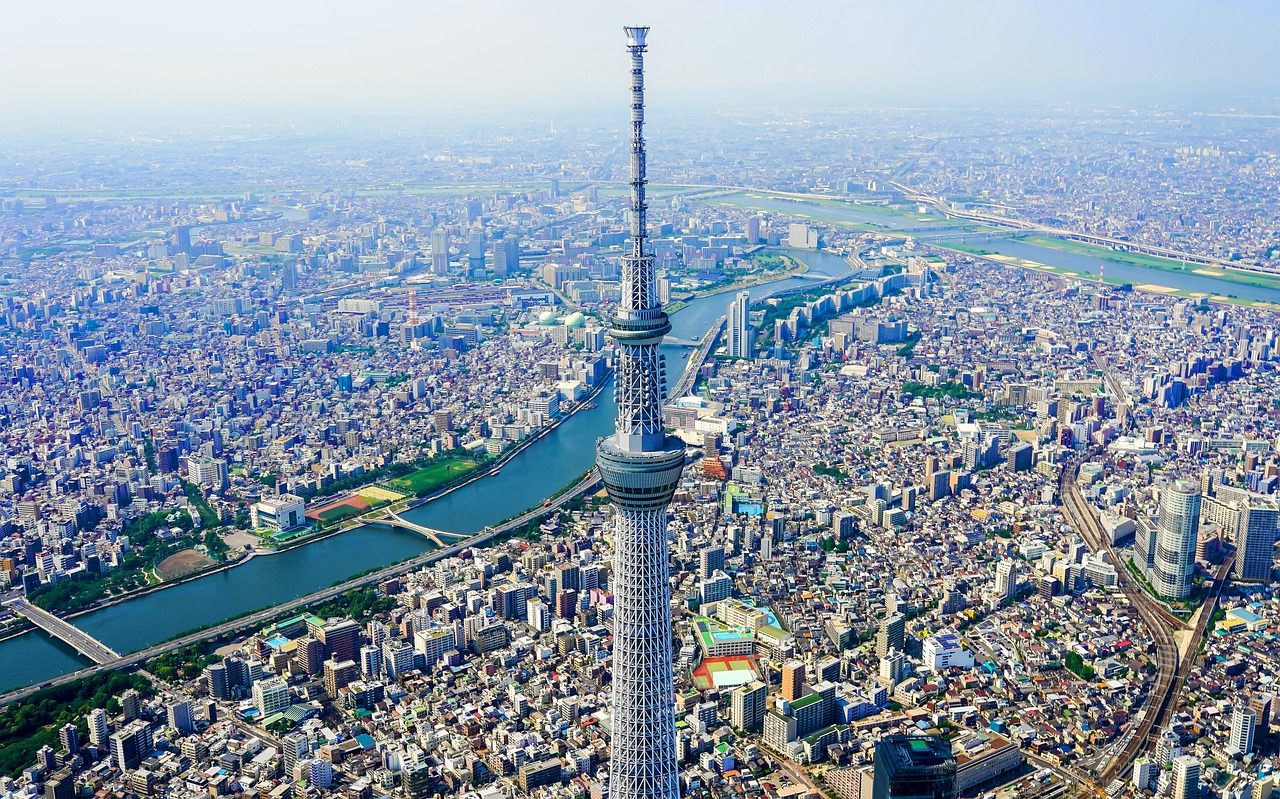
Utilizing Natural Elements
When it comes to capturing stunning travel photos in challenging weather conditions, one of the most effective strategies is to utilize natural elements to your advantage. Incorporating elements such as rain, snow, fog, or wind into your compositions can not only add a sense of drama but also a unique touch to your travel photography.
Imagine standing in a misty forest, with the fog creating an ethereal atmosphere around ancient trees, or capturing the movement of raindrops on a city street, adding a dynamic element to an otherwise ordinary scene. These natural elements can elevate your photos from ordinary to extraordinary, providing a sense of authenticity and depth that is hard to replicate in controlled environments.
By embracing the weather conditions and incorporating them into your shots, you can create images that tell a story and evoke emotions in the viewer. The key is to see these elements not as obstacles to overcome but as opportunities to enhance your creativity and vision as a photographer.
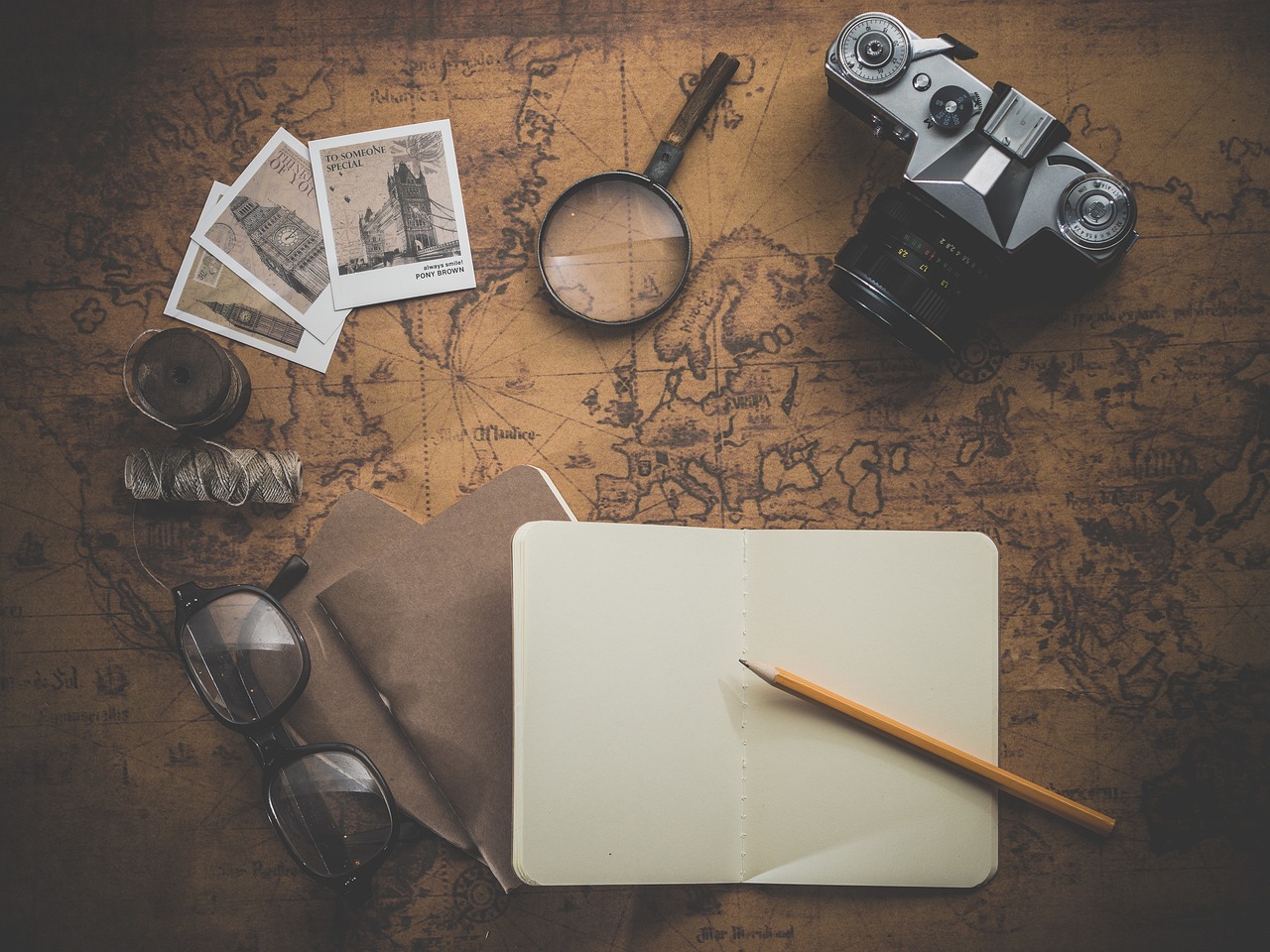
Playing with Light and Shadows
When it comes to photography, light and shadows are your best friends, especially in challenging weather conditions. Imagine the sun peeking through dark storm clouds, casting dramatic shadows on a rugged landscape, creating a scene straight out of a painting. By , you can add depth, contrast, and intrigue to your travel photos, making them stand out from the ordinary snapshots.
Consider how the angle of light can transform a mundane subject into a work of art. Experiment with backlighting to create silhouettes that convey mystery and emotion. Use shadows to frame your main subject, drawing the viewer's eye to the focal point of your composition. Embrace the interplay of light and shadows to evoke different moods and tell compelling stories through your images.
Remember, photography is not just about capturing what is in front of you but also about manipulating light to create visually stunning effects. Whether you are shooting in the harsh glare of the midday sun or the soft glow of twilight, understanding how light interacts with your surroundings is essential for producing captivating travel photos.
Furthermore, don't shy away from experimenting with long shadows during sunrise or sunset, as they can add a sense of warmth and nostalgia to your pictures. Utilize the golden hour to capture the magical quality of light that occurs just before sunset or after sunrise, bathing your subjects in a soft, flattering glow.
Lastly, don't be afraid to embrace darkness and shadows in your compositions. Sometimes, the most captivating images are those that play with the contrast between light and dark, revealing hidden details and textures that might go unnoticed in broad daylight. By mastering the art of , you can elevate your travel photography to new heights and create images that leave a lasting impression on viewers.

Embracing Imperfections
When it comes to travel photography, embracing imperfections can often lead to unique and captivating images. Instead of viewing weather-related flaws as hindrances, consider them as opportunities to add character and authenticity to your photos. Lens flares caused by the sun, raindrops on your lens, or even foggy conditions can all contribute to the mood and story of your travel shots.
Imagine a scenario where a sudden rain shower interrupts your photo session. Rather than packing up and seeking shelter, why not use the rain to your advantage? The glistening raindrops can create a dreamy effect in your images, adding a touch of magic to an otherwise ordinary scene. Embracing imperfections like these can set your photos apart and make them more memorable.
Moreover, incorporating weather-related elements into your compositions can elevate the visual interest of your travel photos. Picture a misty morning by a serene lake or a snowy landscape with soft, diffused light. These imperfections, when embraced and creatively captured, can transform your images into works of art that evoke emotions and tell compelling stories.
Remember, perfection is not always the goal in photography. By embracing imperfections and seeing them as opportunities for creativity, you can take your travel photos to the next level, making them truly stand out in a sea of generic images.
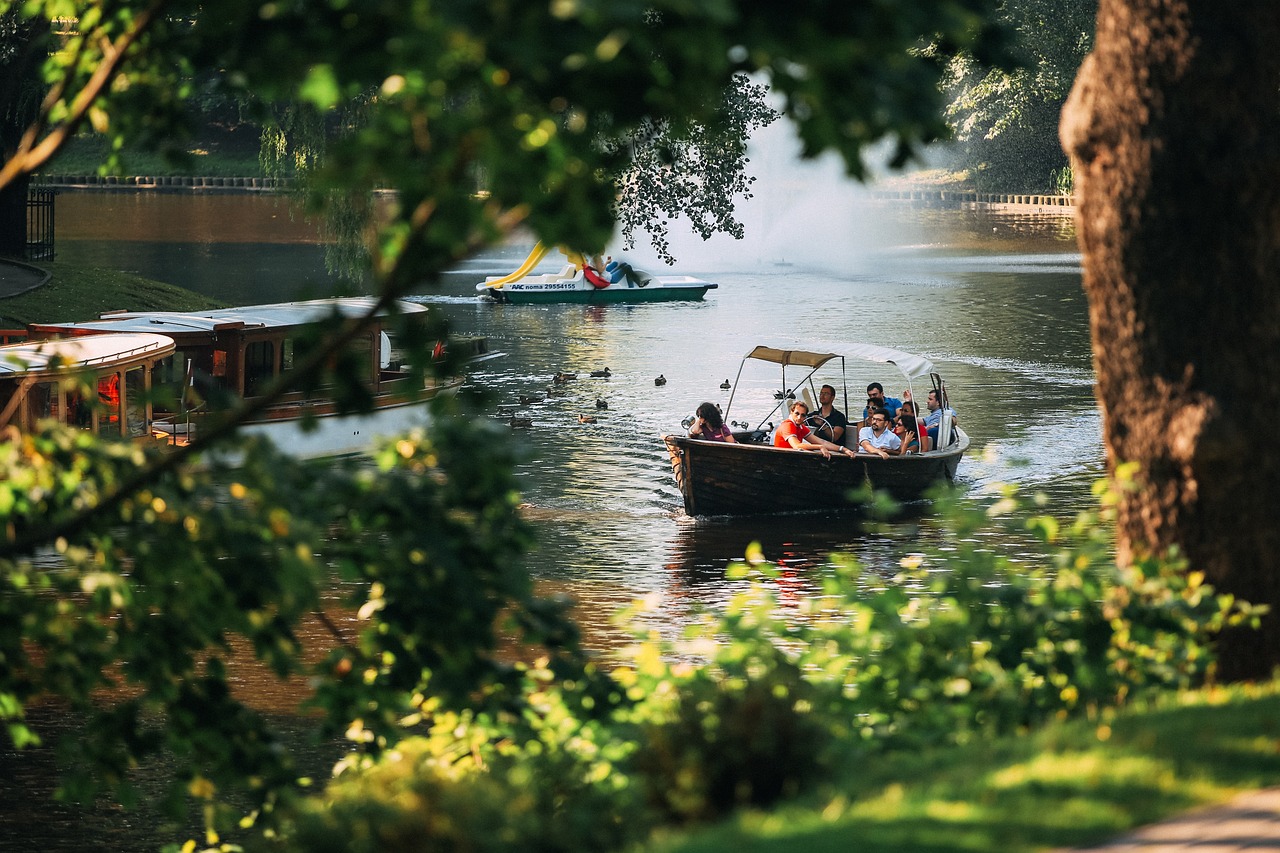
Protecting Your Equipment
When it comes to capturing great travel photos in challenging weather conditions, protecting your equipment is paramount. Your camera gear is not only essential for taking stunning shots but also a significant investment that needs to be safeguarded from the elements.
One effective way to protect your equipment is by using weather-sealed camera bodies and lenses. These specialized gear can provide an extra layer of defense against moisture, dust, and other environmental factors that could potentially damage your equipment.
Additionally, investing in high-quality camera bags or cases that offer water resistance can help keep your gear safe and dry during unexpected rain showers or snowfall. It's essential to choose a bag that not only provides protection but also offers sufficient padding to prevent any impact damage.
When shooting in challenging weather conditions, consider using lens filters to shield your lenses from water droplets, snowflakes, or dust particles. UV filters or clear protective filters can serve as a barrier, allowing you to capture clear and sharp images without worrying about damaging your lens.
Furthermore, carrying a microfiber cloth in your camera bag is a simple yet effective way to keep your equipment clean and free from smudges or water spots. Regularly wiping down your camera body and lenses can help maintain their optimal performance and extend their lifespan.
It's also crucial to avoid sudden temperature changes that can cause condensation inside your camera equipment. When transitioning from cold to warm environments or vice versa, allow your gear to acclimate gradually to prevent moisture buildup that could harm sensitive electronic components.
Lastly, don't forget to check the weather forecast before heading out for a photography session. Being prepared and knowing what weather conditions to expect can help you plan accordingly and take necessary precautions to protect your equipment and capture stunning travel photos even in the most challenging situations.
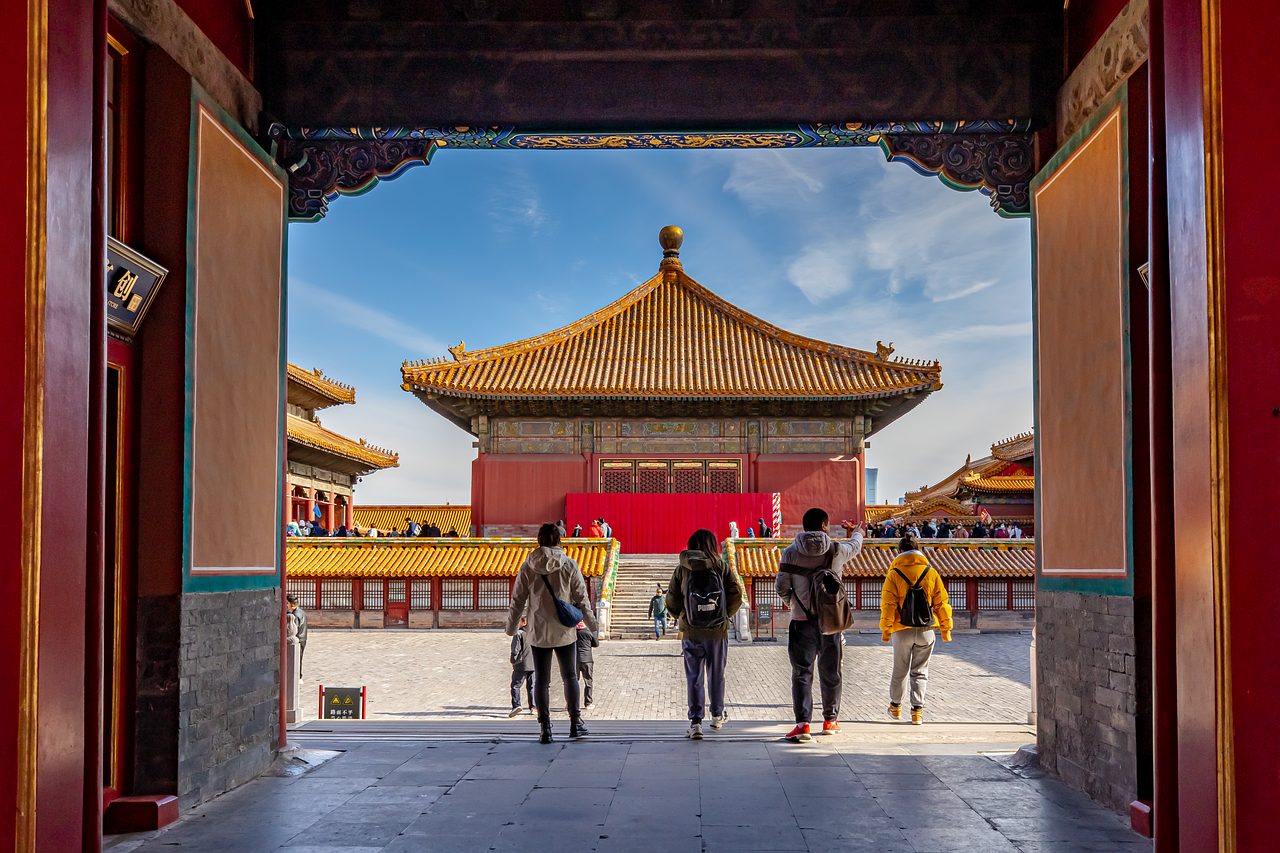
Experimenting with Settings
When it comes to capturing great travel photos in challenging weather conditions, experimenting with settings on your camera can make a significant difference. Adjusting settings such as exposure compensation and white balance allows you to adapt to varying weather situations and achieve the desired effects in your photographs. By exploring different settings, you can enhance the colors, tones, and overall mood of your travel images, creating unique and visually appealing results.
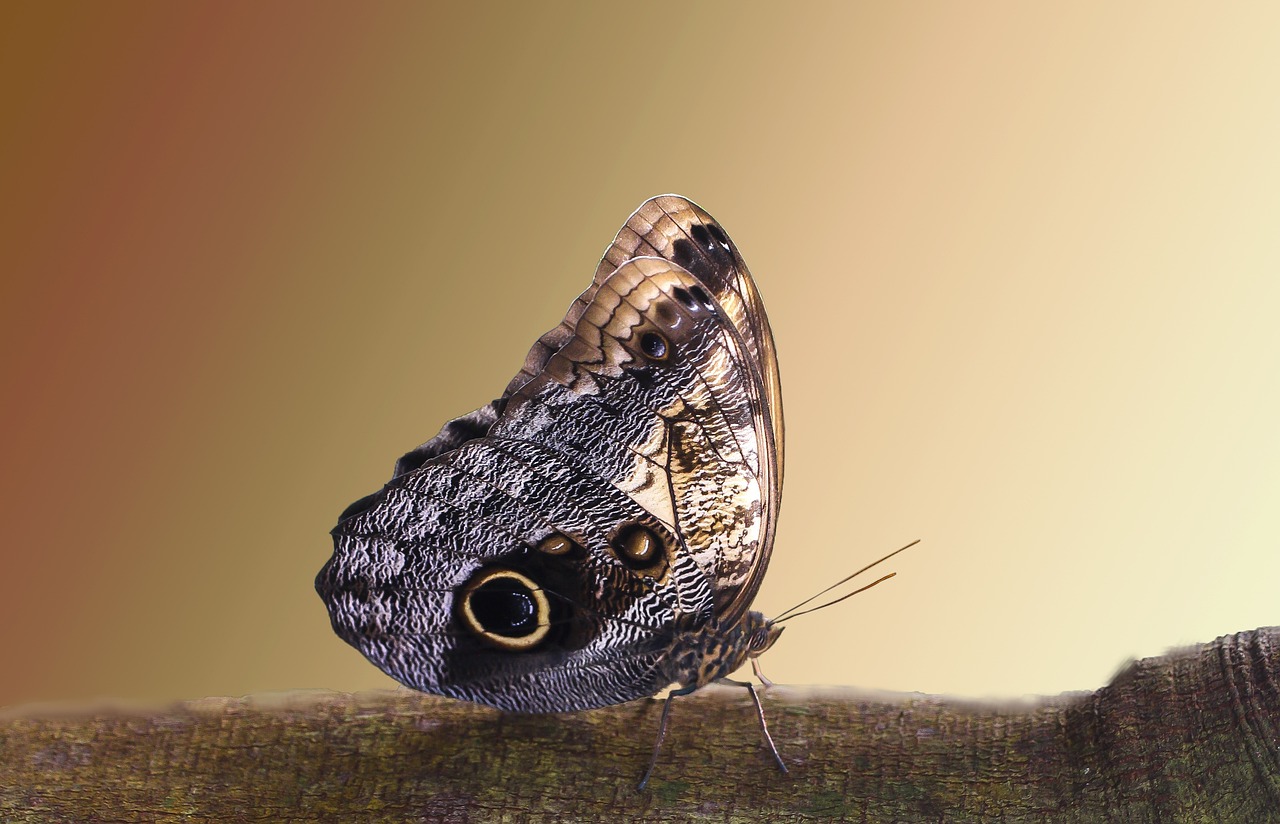
Post-Processing Techniques
Post-processing techniques play a crucial role in enhancing the quality and visual appeal of travel photos captured in challenging weather conditions. By utilizing various tools and software, photographers can refine their images to achieve the desired effects and bring out the full potential of their shots. One common post-processing technique is adjusting the exposure and contrast levels to balance the light and dark areas in the photo, creating a more dynamic and engaging image.
Additionally, color correction tools can be used to enhance the vibrancy and saturation of the colors in the photo, making them more vivid and captivating. By fine-tuning the color balance, photographers can ensure that the hues in their travel photos accurately represent the mood and atmosphere of the scene, even in adverse weather conditions.
Furthermore, post-processing techniques allow photographers to apply creative filters and effects to their images, adding a unique and artistic touch to their travel photos. By experimenting with different editing styles and textures, photographers can transform ordinary shots into extraordinary works of art, capturing the essence of their travel experiences in a visually stunning way.
Moreover, cropping and resizing tools can be used to frame the composition of the photo and eliminate any distracting elements, focusing the viewer's attention on the main subject. By carefully cropping and resizing their travel photos, photographers can create visually appealing images that tell a compelling story and evoke emotions in the viewer.
Overall, mastering post-processing techniques is essential for photographers looking to elevate their travel photos to the next level and create impactful visual narratives that resonate with viewers. By harnessing the power of editing tools and software, photographers can unleash their creativity and transform ordinary travel photos into extraordinary works of art that inspire and captivate audiences worldwide.
Frequently Asked Questions
- How can I protect my camera gear in challenging weather conditions?
It is essential to use protective gear such as camera rain covers, lens hoods, and waterproof camera bags to shield your equipment from rain, snow, and other harsh elements. Additionally, storing your gear in a dry place when not in use can help prevent damage.
- What camera settings are best for capturing photos in adverse weather?
When shooting in challenging weather conditions, consider adjusting your exposure compensation to account for the changing light levels. Experiment with different white balance settings to ensure accurate color representation in your photos.
- How can I incorporate natural elements like rain or fog into my travel photos?
To add drama and uniqueness to your images, embrace the weather conditions by including raindrops, fog, or snow in your compositions. These elements can enhance the mood of your photos and create visually compelling scenes.
- What post-processing techniques can I use to enhance my travel photos taken in challenging weather?
After capturing your photos, utilize post-processing tools like Adobe Lightroom or Photoshop to adjust exposure, contrast, and colors. You can also remove unwanted distractions or enhance details to create stunning final results.



